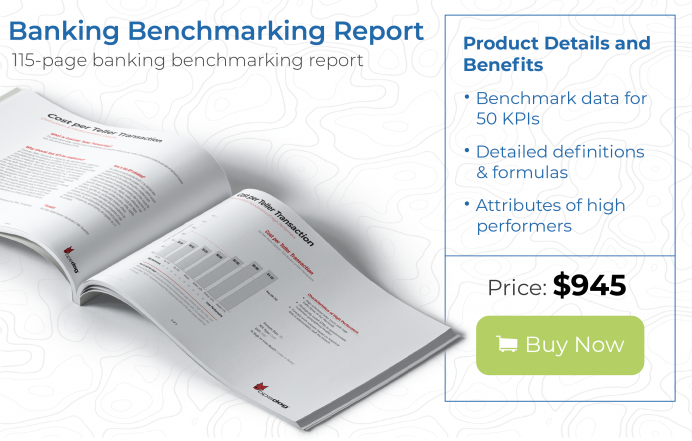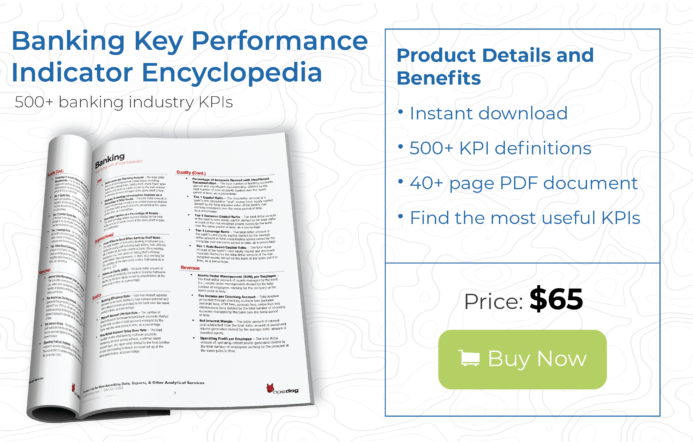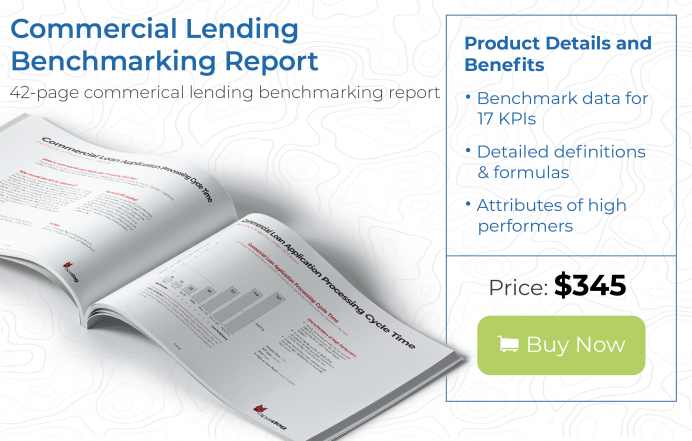In response to the 2008 financial crisis, banks in the U.S. and across the globe have taken steps to significantly improve their financial ratios. For example, in an effort to improve their Common Equity Tier 1 capital ratio, banks have raised additional equity.
Although financial ratios are a critical measure of a bank’s liquidity and solvency, there are a variety of ratios that measure everything from customer service to staffing levels that banks can use to benchmark their efficiency, performance, and profitability.
And while bank capitalization has improved, banks remain challenged with increased competition from new market entrants, higher compliance costs, increased cybersecurity costs, and the cost and time burden of outdated legacy systems, making banking industry benchmark ratios even more important to review.
What are Banking Industry Benchmark Ratios?
Banking industry benchmark ratios can be defined as a benchmark defined as a ratio, which is the quantitative relation between two data points that measures the proportion between the two, which is used by banks to evaluate different aspects of the banks business areas or processes. Ratio analysis relies on line-item data taken directly from the bank’s financial statements and compares that data to others in the banking industry.
Banking industry benchmark ratios serve a variety of purposes. They enable bank leadership to analyze the bank’s overall performance, compare that performance to its peers, and institute changes to improve performance. Benchmark ratios allow regulatory agencies to determine if a bank is in compliance with federal and state regulations for solvency and liquidity. They also enable shareholders to gage whether or not the bank is a solid investment or presents an unacceptable level of risk.
Types of Banking Industry Benchmark Ratios
There are several broad categories of banking industry benchmark ratios:
- Profitability ratios such as return on asset (ROA) and return on equity (ROE)
- Capital adequacy ratios such as Common Equity Tier 1 capital ratio
- Asset quality ratios such as loan quality ratio
- Efficiency ratios such as retail banking staffing ratio
- Liquidity ratios such as short-term funding ratio
Benefits of Using Benchmark Ratios in Banking
Maintaining industry-standard ratios are critical for remaining compliant with federal and state regulators, but ratios in and of themselves may not be particularly revealing. The best way to use banking benchmark industry ratios is to compare how you measure up to your peer financial institutions as well as to compare current ratios against your prior performance to determine if you are improving or falling behind. Ratios provide a clear indication of how well your bank is using its assets and equity to generate profits.
Examples of Banking Industry Benchmark Ratios
Banks can choose from a wide variety of banking industry benchmark ratios to measure their performance. However, there are few benchmark ratios that are extensively used in the field:
Benchmark Ratio #1: Recruiting and Hiring Staffing Ratio
Since employing highly skilled staff is a key goal for most banks, human resources departments tend to have a relatively high number of employees dedicated to attracting, screening, and onboarding new employees. Those banks experiencing high growth may have a relatively high number of recruiting and hiring staff compared to slower-growing peers.
The recruiting and hiring staffing ratio measures the number of employees within the recruiting and hiring function compared to the total number of employees at the bank. Don’t include third-party recruiters or headhunters in this calculation.
Benchmark Ratio #2: Retail Banking Staffing Ratio
Since branch staffing accounts for approximately one-quarter of the total of costs of operating a retail bank, the retail banking staffing ratio is a key indicator of bank profitability. The lower the staffing costs, the higher the profitability. This ratio can also help a bank evaluate the efficiency of changing its hiring model to universal bankers who can handle both teller and branch platform responsibilities.
This metric measures retail banking staff efficiency by dividing the number of company-wide bank employees by the total number of retail banking employees working for the bank at the same point in time, expressed as a ratio (e.g., total employees per retail banking employee).
Benchmark Ratio #3: Investment Banking Staffing Ratio
Similar to the retail banking staffing ratio, this benchmark measures staff efficiency of the investment banking function. To determine efficiency, divide the number of company-wide bank employees by the total number of investment banking employees at the same point in time, expressed as a ratio (e.g., total employees per investment banking employee).
Benchmark Ratio #4: Banking Efficiency Ratio
The banking efficiency ratio measures the bank’s overhead costs as a percentage of its revenue. It’s an easy way to measure a bank’s ability to turn assets into revenue. A lower efficiency ratio indicates that the bank is earning more than it is spending.
To calculate banking efficiency ratio, divide the total non-interest expense incurred by the bank by the total revenue (interest and non-interest income) generated by the bank over the same period of time, as a percentage.
Benchmark Ratio #5: Current Ratio
Current ratio indicates whether the bank has enough cash and cash-equivalents to meet its short-term liabilities for a specific time frame, usually one year. It’s called “current” since it refers to all current assets and liabilities. It’s also referred to as the working capital ratio or acid test ratio.
Banks strive for a current ratio that meets the industry averages. A current ratio lower than the industry average could indicate a higher than acceptable risk of default or distress. But if the current ratio is too high, the bank may not be using their assets efficiently.
To determine the current ratio, divide the total dollar value of the bank’s current assets (both fixed and liquid assets that can be converted to cash) by the dollar value of a bank’s current liabilities (debts or obligations), as a percentage.
Final Thoughts
Since banks operate and generate profits differently than most other businesses and since banks are highly regulated, banking industry benchmark ratios are somewhat unique to financial institutions. Banks’ financial statements are also typically more complicated than those in other industries. For example, while earnings per share is important, it doesn’t tell the entire story of the bank’s profitability.
Banks must analyze a variety of ratios and other benchmarks or key performance indicators related to profitability, capital adequacy, asset quality, efficiency, and liquidity to get a full picture of the health and sustainability of the institution.
For a full list of banking industry benchmark ratios and other metrics, download our Banking Benchmarking Report here.
If you need more help in developing an inventory of metrics for your bank then be sure to utilize our Banking Key Performance Indicator Encyclopedia for in-depth information on over 700 KPIs, or contact us for more information on our Benchmarking Research and business intelligence implementation services. We will help you benchmark your bank and provide you with presentation-ready, high-quality deliverables at an affordable price.



